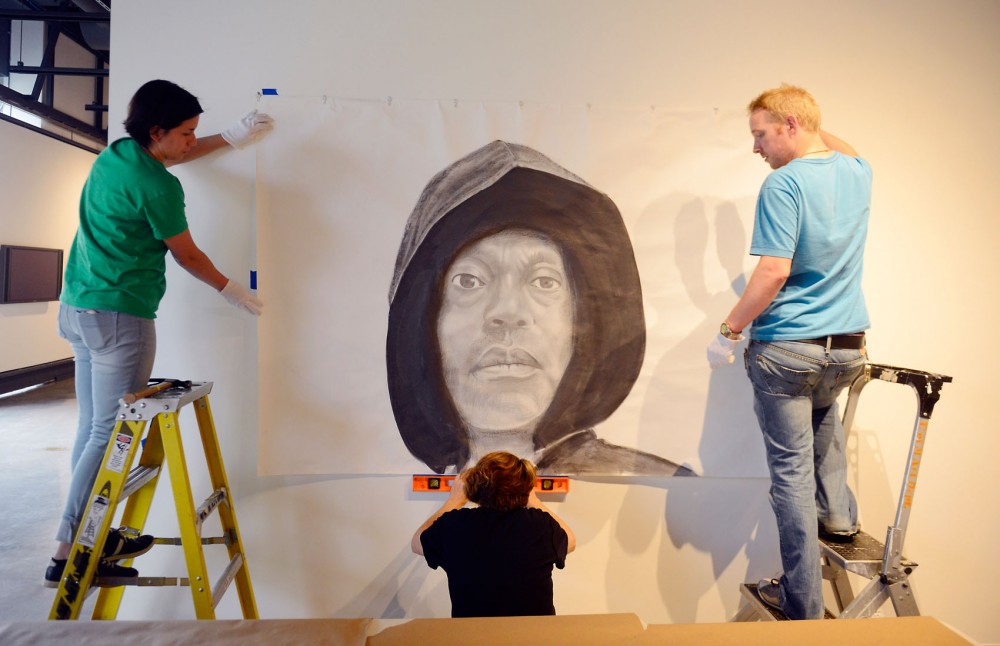Howard Oransky, director of the Katherine E. Nash Gallery, noticed a trend of social practice art — or time-based and engaging work — in his peers’ pieces at the University of Minnesota.
His curatorial team is bringing the activity-based art into a gallery space with the new exhibit on campus called “thinking making living.”
“In social art you often have a group of people participating in an art activity,” Oransky said. “What we wanted was a curatorial process that mirrored the artistic process.”
He said he considers artists’ ideas for displaying their work and includes them in the installation process. This approach is a luxury and a challenge specific to contemporary art because the artists are available to work with, Oransky said.
He said that artist Emily Baxter wants to evoke the feeling of a police questioning room for her project “We Are All Criminals.” He searched for intimidating decor and together, they developed a way to present Baxter’s work with an interrogation table.
The table displays stories of crimes, which the notes’ authors say have slipped through the judicial system. The project is an attempt for viewers to identify with criminals, Oransky said.
Living artists can also exhibit work that evolves and interacts with other contributors.
Teréz Iacovino of the Crescent Collective described how their project, “The Hydroponic Table”, allows viewers to harvest their own meal from the center of a dining table. The artists struggled to build a system to provide proper living conditions for plants at an indoor dining room table, she said.
“We’re not scientists,” Iacovino said. “We’ve been utilizing Tom Michaels, who’s a professor at the U of M in the horticulture department, as a resource to help us navigate the science aspect of it.”
In addition to collaborating with Michaels, the Crescent Collective opens the table up for other artists’ projects, like Kate Casanova’s “The Edible Insect Tasting.” Audiences will gather at “The Hydroponic Table” to taste foreign delicacies and challenge food norms.
Ashley Duffalo and Sarah Schultz of the “thinking making living” organizing team work for the Walker Art Center. The Walker’s Open Field, a platform for community discussions, is a prime example of the movement. Past programs have included feet painting, infant massage workshops and the Internet Cat Video Festival.
Public demonstrations like these originated with World War I era Dada evenings and Fluxus Happenings of the early 1960s. Music, dance, poetry and the live creation of visual art were shown at venues like The Cabaret Voltaire in Zurich or on artist George Segal’s farm in New Jersey.
Both Oransky and Iacovino said modern technology and social media are isolating factors that prompt the human need for more personal interactions. Artists are using social practice now to reintroduce face to face communication and tactile exploration.
But despite the need for art and human interaction, viewer participation is not always guaranteed.
“It actually may not work,” Oransky admitted. “I’m not primarily interested in success. I’m primarily interested in providing this community with different types of artistic experiences that will be meaningful to them.”
What: “thinking making living”
When: Sep. 2 – Dec. 13
Where: Katherine E. Nash Gallery, Regis Center for Art, 405 S. 21st Ave., Minneapolis
Cost: Free








